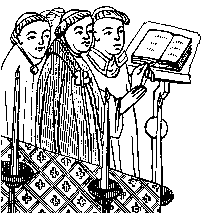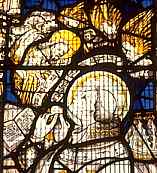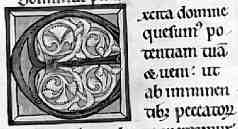 |
| Church
Liturgy |
 |
There
is no record of any liturgical
books except the Bible
in the early Christian church until around the 4th century. By the end of
the middle ages there existed an array of books containing the texts, music
and instructions for the complete performance of all the various ceremonial
activities practised within the church. There were books containing all the
components of various services, and special books for the use of the bishop,
the priest, the deacon, the reader or the choir. |
| The precise content of the liturgy, including the mass and the divine office, was not absolutely fixed either in time or space. There were variants between different dioceses and orders. The Cluniacs, for example, were renowned for their lengthy and elaborate liturgy, while the mendicant preaching orders such as the Domincans and Franciscans, or the local parish priest, had other duties which prevented them filling their entire day with worship. Particular geographical areas included feasts to favoured local saints in their liturgical round. |
| Various
categories of works were introduced for specific purposes, and over centuries
were assembled into the larger compilations. One of the first works recorded
was the diptych;
lists of persons and churches for whom prayers were to be said, read by
the deacon down to the middle ages. They consisted of two tablets folded
like a book with the names of the living on one side and the names of
the dead on the other. |
| The
first books of the Western rite were the sacramentaries,
originating in the 7th or 8th century. This was the book of the mass,
but it did not contain the complete service, only the part of it spoken
or chanted by the priest celebrating the mass himself. It contained no
lessons or parts for the choir. It also contained services that were particular
to a bishop and could not be performed by an ordinary priest, such as
ordinations, consecration of a church or altar, exorcisms and certain
blessings.
|
|
| |
Pope
Gregory at mass depicted in a 15th century stained glass window in All
Saints, North Street, York. |
| Separate
books for the readers and for the choir were compiled for use in the mass.
The evangelary
or lectionary
contained the Bible texts to be read during the service. A benedictional
contained prayers for use in the service. Homilaries
contained the Homilies of the Fathers, while the martyrologies
contained the lives and deaths of the martyrs, to be read on their feast
days. |
|
|
| Segment
from an 11th century martyrology of Odo, bishop of Vienne, who died in
the late 9th century (Avignon, Musée Calvet, MS 98). |
| The
parts of the mass sung by the choir were arranged in the gradual,
sometimes referred to as the Liber Antiphonarius Missae. There were also
separate collections of hymns arranged in hymnals.
A troper contained
the tropes, a short series of words added as embellishment to the text
of the mass or divine office by the choir. Tropes went out of fashion
around the 12th century, to be replaced by a different form known as sequences,
although the term troper was still used to describe the book in which
they were recorded. These manuscripts were usually very large so that
a whole choir could use them at once. |
|
| |
The
medieval choir stalls of Ripon Minster in Yorkshire. |
| Volumes
called ordinals
were produced from the 8th to the 15th century. These did not contain
texts or prayers, but instructions as to what to do at particular stages
of the ritual. |
| Changes
to the conduct of the mass caused changes to the text used by the celebrant.
At Low Mass the priest had to supplement personally what was chanted by
the deacon and sub-deacon and sung by the choir. In High Mass he also
began to sing quietly the parts sung by someone else. The sacramentary
was expanded by the addition of the lessons which were read and the chants
of the choir until it became the complete text of the mass, the missal.
This work was exclusively for the use of the priest, and were not usually
highly decorative illustrated works, although there are exceptions. The
conduct of the mass depended on its place in the church calendar,
and this is reflected in the structure of the work. |
|
| |
Segment
from a 12th century missal (British Library, add ms 16949, f,iv), by permission
of the British Library. |
| Lectionaries,
graduals and tropers were still produced for the use of the readers and
the choir. |
| The
services that were obliged to be performed by a bishop, which had been
in the sacramentary, were not included in the missal. These formed a separate
work called the pontifical. |
|
| Prayers
for the king in a 13th century pontifical of the Cathedral church of Sens
(Metz, Stadtbibliothek, Salis MS 23, f.131). |
continued
 |
 Categories
of Works Categories
of Works |
|
 |
 |
 |
 |
 |
 |
 |





